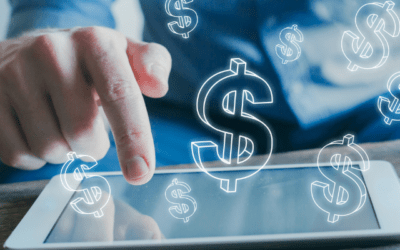Why emerging technology has us so excited about the future of marketing
As modern-day marketers, we currently rely heavily on social media, advertising, SEO, direct mail, content, videos, podcasts and more to create winning connections with potential customers. But, what’s modern now, may be passé tomorrow. It seems that with each day that passes, a new trend and a new way of reaching clients emerges. As much as we need to stay up to date with current trends (#priorities), we can’t help but look ahead to what technology has in store for 2017 and beyond. At HSM, it’s got us crazy excited! #NerdAlert
While some trends may seem like elements of a sci-fi movie now, building them into our future marketing strategies is what will propel our skills from good to great, and give our clients that competitive advantage over their closest competition. #Winning! Below are just three of many emerging technologies on the horizon in the marketing world.
Virtual reality immerses us in a whole new world (magic carpet not required)
Let’s admit it, we’ve all been at a trade show where you see “that guy” wearing giant googles, wobbling from side to side, and flailing his arms about. OMG, he looks ridiculous. With your head down, eyes averted, you pass on by. Am I right? …or are you, in fact, intrigued? Umm, we are! On second glance the man is at a travel agency’s booth that has a promotion on all-inclusive trips to Hawaii this month. With the goggles on, he’s trying out one of the resort’s surf lessons—something that intrigued him from the brochure. Next to him, his wife (also wearing goggles) is smiling ear-to-ear and slowly spinning in circles. She’s standing on a beach in Maui taking in the sights and sounds of her dream vacation.
With its high-quality video, virtual reality goggles capitalize on the “show; don’t tell” method of marketing, by creating a three-dimensional, immersive experience. Virtually transporting these customers to Hawaii created a state of “try before you buy,” and showcased to them an interactive vacation that no brochure can compete with.
Consider other marketing in other industries: hotels allowing brides and grooms to visualize their weddings, instead of touring an empty banquet hall; sports teams sealing trade deals by allowing players to immerse themselves in the experience of a locker-room victory party or walking out onto the field amid the cheers of thousands of fans. Allowing prospective buyers to come as close as they can to experiencing a reality and create an emotional connection, without actually being in it, is introducing a whole new wave of marketing. We think virtual reality may have only scratched the surface in 2016; we can’t wait to see how immersive this technology becomes in the months ahead!
Augmented reality adds a new layer (literally!) to digital marketing
Have you ever wandered through a busy shopping mall with a to-do list in hand, plus screaming children and hefty shopping bags in tow? You need sunglasses for your upcoming vacation, a bold lipstick for tomorrow night’s gala and—eventually—you and your spouse need to agree on a sofa set. Your hands are full, your mind is preoccupied; you can’t try anything on, let alone visualize various furniture configurations for your living room! *Deep breaths*
Augmented reality (AR) is on the rise in a number of marketing sectors, including cosmetics, eyewear and—yes—furniture, just to name a few. AR enhances what you currently see by overlaying virtual elements over it using something as basic as your smartphone’s camera. Imagine being able to point the camera at yourself and swipe through various sunglasses or lipsticks until you find the perfect fit. Or, point the camera in your living room and swipe through furniture sets. (O.K. that last one was a little boring, but you get the idea!)
But, as marketers, we need to remember that AR is not based on creating a completely new reality; it’s about enhancing what already exists, and creating value from it. In 2017, we don’t expect to see a world where customers are scanning every product in the cosmetic aisle to see how it would look on them. Instead, as marketers embracing AR, we must focus on the value of adding another layer of information in an already saturated digital marketplace. At HSM, we’ll be considering the contexts in which B2B customers can leverage this, and where it will enhance a customer’s experience with ease, enjoyment, convenience and—of course—fun!
Artificial intelligence unlocks deeper marketing insights…and robots, too?
When we first mention artificial intelligence (AI), it’s hard not to think of a future where human activity has been completely replaced by machines. We’ve already seen the rise of automation in the automotive industry (and thank goodness for that, because if a computer doesn’t parallel park my car, I don’t know who will!) But what about other industries? Could you imagine this article being written entirely by a robot? Would his writing be any good? Would he understand SEO? Would he work so fast and so diligently that he’d put us all to shame?! Okay, okay, let’s slow this down.
AI is about supplementing our knowledge and experience, not completely replacing it. Phew! Here’s an example… Every customer in the marketplace can be identified with a cluster of data (age, gender, location and about 100 more characteristics that we won’t list here). Data is everywhere, and while we love analyzing it, the problem is there’s so much data for us to sort, process and act upon that it can be oftentimes overwhelming. Instead, imagine a world where intelligent marketing software could analyze data sets for us, and then provide us with real-time updates, recommendations and appraisals for campaign success. Now we’re talking! With this type of up-to-the-minute data, we could spend less time turning numbers into words, and more time acting upon them to create personal, relevant connections with your customers. Robots FTW!
Our goal at HSM, is to end 2016 with a solid strategy for capitalizing on these digital technology tools of 2017. The three trends above are just a few that we have on our radar, with many more to be discovered. With any new form of technology, some may or may not reach their full potential in the next year, and some may fizzle out completely. Unfortunately, while we can’t predict the future, there’s no reason why we shouldn’t plan for it. So, as B2B marketing consultants, we’re keeping our clients in mind by gauging the effectiveness of several new technologies and how they can fit into our marketing programs.


